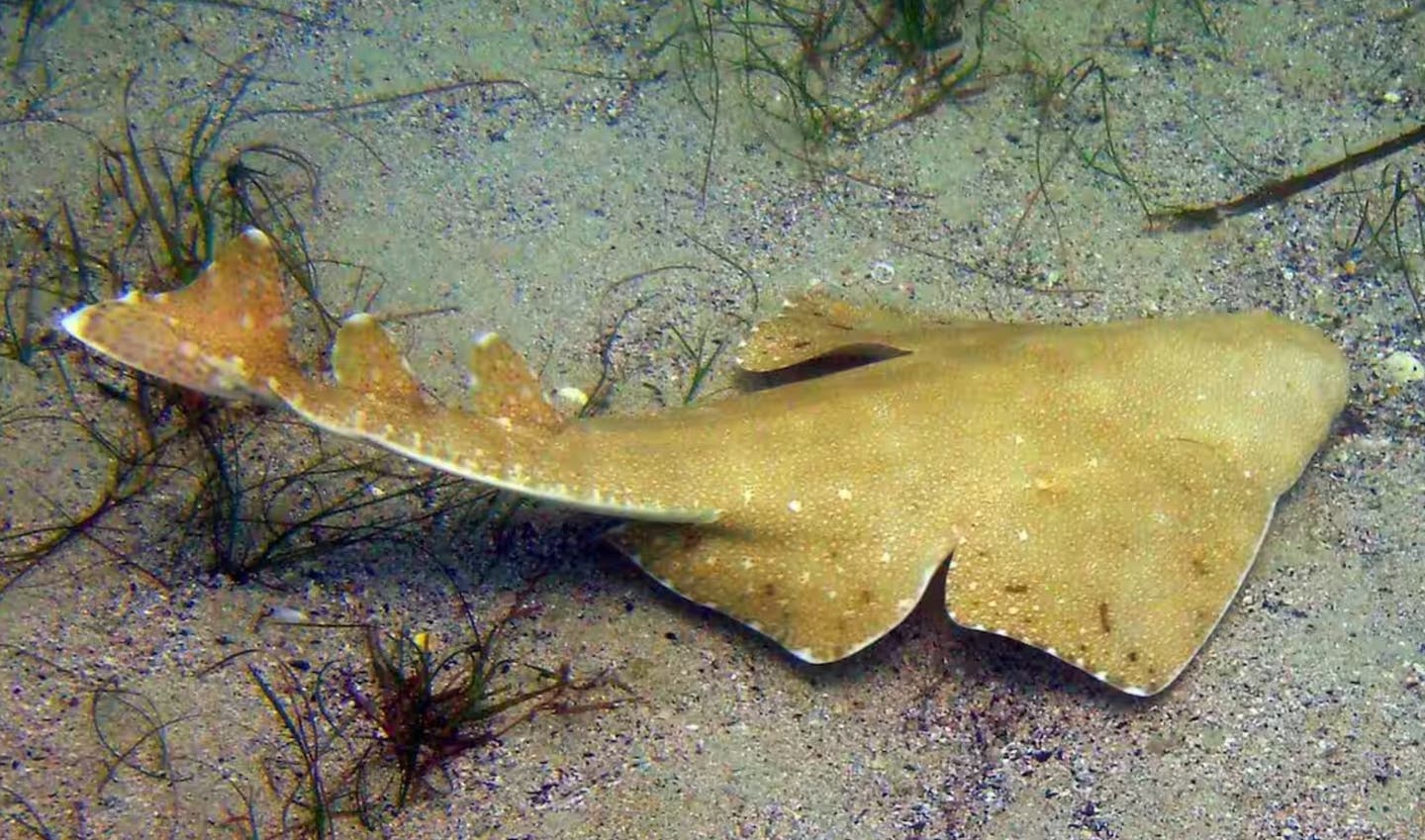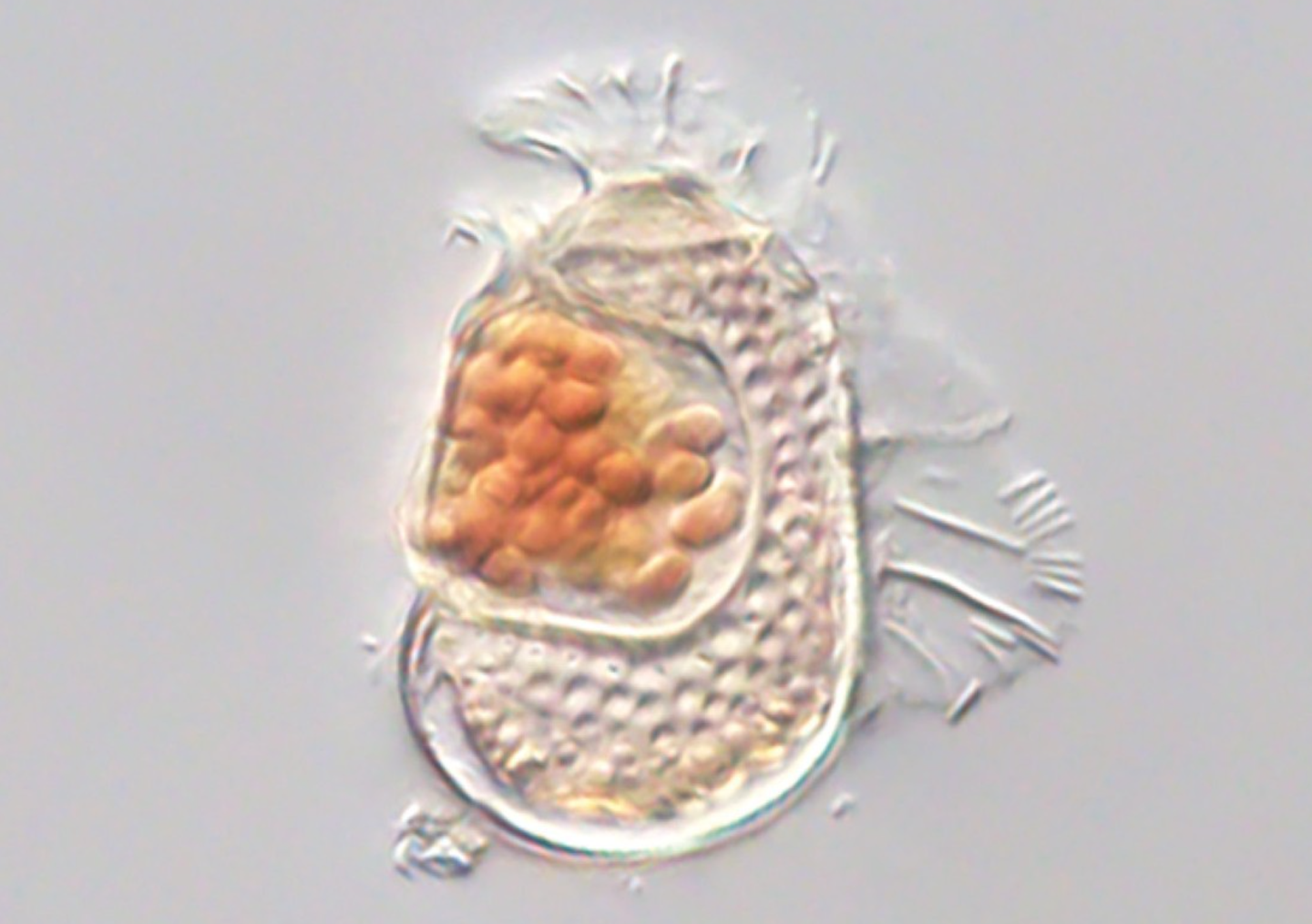Shark species thought extinct for over 200 years discovered alive off the coast of Chile
The Chilean angel shark, scientifically known as Squantina armata or Angelote in Spanish, measures a little over three feet in length.

The Chilean angel shark, scientifically known as Squantina armata or Angelote in Spanish, measures a little over three feet in length. (CREDIT: Creative Commons)
Fisherman along the Chilean coast cast their gillnets into the ocean, hoping to snare bony fish. However, what they reeled in wasn't just another routine catch—it was a discovery of significant scientific importance.
In 1887, a researcher published a description of the Chilean angel shark, a small shark resembling a ray found in shallow coastal waters. However, this description was incomplete and lacked precision, according to a recent study published in the European Journal of Taxonomy.
The original study from 1887 provided scant body measurements, making it difficult to distinguish the Chilean angel shark from closely related species. Moreover, the holotype, the specimen collected for scientific study, was lost, leaving a gap in the scientific knowledge about these sharks.
Squatina Armata (Philippi, 1887), neotype, (1004 mm total length; MNHNCL ICT 7625), fresh specimen. a. Dorsal view. b. Ventral view. (CREDIT: European Journal of Taxonomy)
Although the Chilean angel shark occasionally appeared in fisheries' bycatch over the years, these encounters only provided limited information about the species. A comprehensive description was still lacking.
However, fate intervened when fishers inadvertently caught two full Chilean angel sharks and the head of a third. The specimens were frozen and transported to the National Museum of Natural History in Santiago, Chile, where researchers confirmed their identity.
The Chilean angel shark, scientifically known as Squantina armata or Angelote in Spanish, measures a little over three feet in length. Its flat body resembles that of a ray more than a traditional shark. Notably, the shark features enlarged dorsal thorns—small, sharp growths on its head and back.
Related Stories:
Despite its intriguing characteristics, little is known about the Chilean angel shark. Due to insufficient research and sightings, the species is classified as "critically endangered" by the International Union for Conservation of Nature Red List.
Angel sharks, including the Chilean species, are nocturnal bottom-dwellers that spend much of their lives buried in coastal sediment. They are ambush predators, lying in wait for small fish, crustaceans, mollusks, and cephalopods to pass by before striking.
The researchers emphasize the importance of understanding and identifying the Chilean angel shark for conservation efforts. Threatened by coastal development, habitat degradation, and fishing activities, these sharks require urgent conservation attention.
“Recent taxonomic studies on angel sharks … with this updated morphological characterization of the Chilean angel shark, questions on geographic range, estimations of abundance, and real incidence in landings can be clarified to ultimately inform better conservation practices of this critically endangered species and other angel sharks on the Pacific coast of America,” the researchers said.
The captured sharks were found near Playa Seremeño in northern Chile, along the Pacific coast.
The accidental capture of two Chilean angel sharks by artisanal fishers has provided researchers with valuable specimens for study. With improved understanding of the species' morphology and characteristics, conservation efforts can be better directed to protect this critically endangered shark and its counterparts along the Pacific coast of America.
For more science and technology stories check out our New Discoveries section at The Brighter Side of News.
Note: Materials provided above by the University of Birmingham. Content may be edited for style and length.
Like these kind of feel good stories? Get the Brighter Side of News' newsletter.
Joshua Shavit
Science & Technology Writer | AI and Robotics Reporter
Joshua Shavit is a Los Angeles-based science and technology writer with a passion for exploring the breakthroughs shaping the future. As a contributor to The Brighter Side of News, he focuses on positive and transformative advancements in AI, technology, physics, engineering, robotics and space science. Joshua is currently working towards a Bachelor of Science in Business Administration at the University of California, Berkeley. He combines his academic background with a talent for storytelling, making complex scientific discoveries engaging and accessible. His work highlights the innovators behind the ideas, bringing readers closer to the people driving progress.



